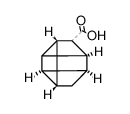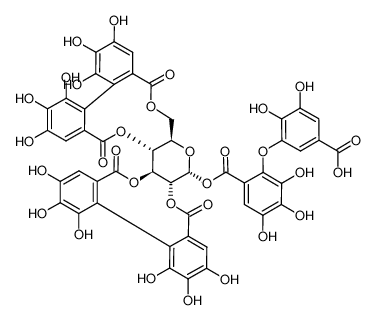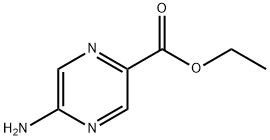Hi, I'd like to ask—Is hydrochloric acid (HCl) acidic or basic? What chemical characteristics determine its pH classification? How does HCl dissociate in water, and what role do its ions play in defining acidity? Are there common laboratory or industrial uses where recognizing its acidic properties is essential? Thanks!
Is Hydrochloric Acid (HCl) Acidic or Basic? Understanding Its Chemical Properties and Aqueous Behavior
Related Encyclopedia

- 7647-01-0
- ClH
- 36.46
- All (25)
- China (20)
- (25)

- 53993-25-2
- C9H10O2
- 150.17400
- All (0)
- China (0)
- (0)

- 101752-05-0
- CH5ClO
- 68.50280
- All (0)
- China (0)
- (0)

- 12015-40-6
- Cl2H2
- 71.91390
- All (0)
- China (0)
- (0)
- 19400-49-8
- ClH8O3
- 90.50680
- All (0)
- China (0)
- (0)
- 42348-42-5
- ClH2+
- 38.98180
- All (0)
- China (0)
- (0)

- 82203-00-7
- C48H32O31
- 1104.75000
- All (0)
- China (0)
- (0)
- 33439-12-2
- C6H5NO4Se
- 234.06800
- All (0)
- China (0)
- (0)

- 64990-51-8
- C4H9ClO2
- 124.56600
- All (0)
- China (0)
- (0)
- 160208-71-9
- CH3Cl3
- 121.39400
- All (0)
- China (0)
- (0)
Related Products More >
-
- USD 30.0000
- 6kg
-
- 7757-82-6
- CNY Request For Quotation
-
- 10124-56-8
- CNY Request For Quotation
-
- 7664-38-2
- CNY Request For Quotation
-
- CNY Request For Quotation
-
- CNY Request For Quotation
-
- CNY Request For Quotation
-
- CNY Request For Quotation


 沪ICP备2021018848号-5
沪ICP备2021018848号-5


The chemical characteristics that define HCl’s pH classification are closely tied to its nature as a strong acid. As a strong acid, HCl completely dissociates in water. The dissociation reaction of HCl in water can be written as HCl → H⁺ + Cl⁻. This complete dissociation implies that almost every single HCl molecule breaks apart into H⁺ and Cl⁻ ions upon dissolution in water, resulting in a high concentration of H⁺ ions. The pH of a solution is calculated based on the negative logarithm of the H⁺ ion concentration, expressed as pH = -log[H⁺]. A higher concentration of H⁺ ions corresponds to a lower pH value, which firmly places HCl solutions within the acidic range. In contrast, weak acids only partially dissociate, producing a much smaller number of H⁺ ions and thus leading to solutions that are less acidic. The complete dissociation of HCl and the substantial release of H⁺ ions are the key chemical traits that determine its classification as an acidic substance with a low pH.
When HCl dissolves in water, it undergoes a process of complete dissociation, separating into H⁺ ions and Cl⁻ ions. The H⁺ ions are the main contributors to the acidic properties of the solution. In an aqueous environment, H⁺ ions do not exist alone; instead, they combine with water molecules to form hydronium ions (H₃O⁺). So, the more accurate representation of the dissociation process is HCl + H₂O → H₃O⁺ + Cl⁻. The hydronium ion is the active species that exhibits acidic behavior. It can react with bases in acid - base neutralization reactions, corrode certain metals through chemical reactions, and cause changes in the color of acid - base indicators. The Cl⁻ ions, as the conjugate base of a strong acid, are relatively inactive in acidic solutions and do not have a significant impact on the pH. Their main function is to act as counterions, balancing the positive charge of the H⁺ (or H₃O⁺) ions and maintaining electrical neutrality within the solution. Therefore, the dissociation of HCl in water generates H₃O⁺ ions, which are the decisive factor for the solution’s acidity, while Cl⁻ ions play a supportive role in charge balance without influencing the acidic characteristics.
Recognizing the acidic properties of HCl is of utmost importance in a wide range of laboratory and industrial applications. In laboratory settings, HCl is frequently used as a strong acid in acid - base titrations. Acid - base titration is a fundamental quantitative analytical method used to determine the concentration of a base. For example, a precisely standardized HCl solution can be slowly added to a solution of an unknown base until the point of neutralization is reached. By carefully measuring the volume of HCl used and knowing its concentration, along with applying the principles of stoichiometry in acid - base reactions, the concentration of the base can be accurately calculated. Additionally, HCl is used to adjust the pH of solutions in various experiments. Many chemical reactions are highly sensitive to the pH of the reaction medium. By adding controlled amounts of HCl, scientists can lower the pH of a solution to the optimal level required for a particular reaction to proceed efficiently. HCl is also involved in the preparation of metal chlorides. When it reacts with metals or metal oxides, it can form the corresponding metal chlorides. For instance, when iron reacts with HCl, iron(II) chloride (FeCl₂) is produced through the reaction Fe + 2HCl → FeCl₂+ H₂↑, and when aluminum oxide reacts with HCl, aluminum chloride (AlCl₃) is formed according to the reaction Al₂O₃ + 6HCl → 2AlCl₃ + 3H₂O.
In the industrial realm, HCl has numerous critical applications where its acidic nature is central. One of the major industrial uses of HCl is in the metal processing industry, especially in the pickling process. Before operations such as welding, galvanizing, or painting, metal surfaces often have layers of oxides or rust. HCl can react with these metal oxides, effectively dissolving them and cleaning the metal surface. This cleaning process ensures better adhesion of coatings or welds. For example, when dealing with iron oxide (rust), the reaction between HCl and Fe₂O₃ is Fe₂O₃ + 6HCl → 2FeCl₃ + 3H₂O. The dissolved iron chloride can then be washed away, leaving a clean metal surface. Another significant industrial application of HCl is in the production of organic compounds. In the pharmaceutical industry, HCl is used in the synthesis of certain drugs. It can act as a catalyst or be used to adjust the reaction conditions to facilitate the formation of specific chemical bonds and structures required for drug molecules. In the food industry, although used with great caution, HCl is sometimes employed as a food additive. It can be used in the production of corn syrups to control the hydrolysis process, or as an acidulant to regulate the acidity of various food products, ensuring the right taste, texture, and shelf - life. However, strict safety standards and regulations must be adhered to when using HCl in food production to guarantee the safety and quality of the final products.
Despite its many useful applications, handling HCl requires extreme caution due to its strong acidic nature. HCl is highly corrosive and can cause severe chemical burns upon contact with skin and eyes. Therefore, whenever working with HCl, appropriate personal protective equipment (PPE) such as acid - resistant gloves, safety goggles, and lab coats must be worn. In laboratory environments, HCl should be stored in specialized acid - resistant containers and kept away from substances that can react with it, such as bases and certain metals, to prevent potentially dangerous and violent reactions. In industrial settings, proper waste management of HCl - containing waste is crucial. Untreated HCl wastewater can have a detrimental impact on the environment, corroding pipes and polluting water sources. To mitigate this, a common practice is to neutralize HCl - containing waste with bases, such as calcium hydroxide (Ca(OH)₂). The reaction between HCl and Ca(OH)₂, 2HCl + Ca(OH)₂ → CaCl₂ + 2H₂O, converts the highly acidic HCl into a less harmful calcium chloride salt solution, which can then be disposed of more safely after further treatment and meeting environmental discharge standards.
In various chemical research and development activities, understanding the acidic properties of HCl helps researchers create new materials and substances. For example, in the development of new types of catalysts, the acidic environment provided by HCl can influence the formation of active sites on the catalyst surface, affecting its catalytic performance. In the study of polymer chemistry, HCl can be used to initiate certain polymerization reactions or to modify the properties of polymers by reacting with functional groups on the polymer chains. This showcases the broad - reaching impact of HCl’s acidic nature in driving innovation and discovery in the chemical sciences.
In environmental monitoring, the presence of HCl - like acidic substances in the atmosphere or in industrial emissions needs to be carefully tracked. Acidic pollutants can contribute to acid rain, which has far - reaching consequences for ecosystems, including damage to forests, lakes, and soil quality. By understanding the chemical behavior of HCl and similar acids, environmental scientists can develop more effective strategies for pollution control and remediation, such as designing better scrubbers for industrial chimneys to remove acidic gases before they are released into the atmosphere.
When it comes to the transportation and storage of HCl on a large scale, special considerations are necessary. Tanks and pipelines used for transporting HCl must be made of materials that can resist corrosion, such as certain types of plastics or lined with corrosion - resistant metals. Additionally, safety protocols during transportation, including emergency response plans in case of leaks, are essential to protect both human health and the environment. In storage facilities, proper ventilation systems are required to prevent the buildup of HCl fumes, which can be harmful if inhaled. These aspects further emphasize the importance of a comprehensive understanding of HCl’s properties for safe and efficient handling in various real - world scenarios.
The dissociation of HCl in water is a highly efficient process. This is due to the nature of the polar covalent bond between hydrogen and chlorine in the HCl molecule. Chlorine is much more electronegative than hydrogen, meaning it has a stronger pull on the shared pair of electrons in the bond. As a result, the electron density around the chlorine atom increases, while the hydrogen atom becomes relatively electron-deficient. When HCl is added to water, the polar water molecules interact with the HCl molecules. The partially negative oxygen atoms in water molecules are attracted to the hydrogen atom in HCl, and the partially positive hydrogen atoms in water molecules are attracted to the chlorine atom in HCl. This interaction weakens the H-Cl bond, eventually causing it to break and leading to the complete dissociation of HCl into H⁺ and Cl⁻ ions. The H⁺ ion, which is essentially a bare proton, is extremely reactive and immediately combines with a water molecule to form the more stable hydronium ion (H₃O⁺). The Cl⁻ ions remain in the solution and, while they do not directly influence the acidity of the solution, they play a crucial role in maintaining charge neutrality.
The recognition of HCl's acidic properties is of utmost importance in numerous laboratory and industrial applications. In laboratory settings, HCl is a staple reagent. One of its common uses is in acid-base titrations. Titrations are a fundamental analytical technique used to determine the concentration of an unknown solution (usually a base) by reacting it with a solution of known concentration (an acid, in this case, HCl). Since HCl completely dissociates in solution, the stoichiometry of the reaction between HCl and the base is highly predictable. This allows for precise calculations of the concentration of the base being analyzed. HCl is also frequently used to adjust the pH of solutions. Many chemical reactions and biological processes are highly sensitive to the pH of the medium in which they occur. By adding controlled amounts of HCl, scientists can lower the pH of a solution to the desired level, creating an optimal environment for specific reactions or experiments. Additionally, HCl is used to clean laboratory glassware. Mineral deposits and metal oxides that accumulate on glass surfaces over time can be effectively removed by the acidic action of HCl. The acid reacts with these deposits, converting them into soluble metal chlorides that can be easily washed away.
In the industrial realm, HCl has a wide range of applications. One of the most significant uses is in metal pickling. Before metals such as steel are coated, painted, or welded, they often need to be free of rust and oxide layers on their surfaces. HCl is used in the pickling process because it reacts with metal oxides. For example, when HCl reacts with iron(III) oxide (rust), it forms iron(III) chloride and water. This reaction effectively removes the rust layer, leaving a clean metal surface ready for further processing. In the pharmaceutical industry, HCl is involved in the synthesis of many drugs. It can be used to catalyze reactions, adjust the pH of reaction mixtures, or help in the purification and formulation of drugs. In the food industry, HCl is used as a food additive. It can be used to hydrolyze vegetable proteins, which is important in the production of certain flavor enhancers. It also helps in controlling microbial growth by adjusting the pH of food products, making the environment less favorable for the growth of bacteria and other microorganisms. In the chemical industry, HCl is used in the production of a variety of organic compounds. For example, in the synthesis of vinyl chloride, which is used to produce polyvinyl chloride (PVC) plastics, HCl can act as either a catalyst or a reactant. In all these applications, a thorough understanding of HCl's acidic properties is crucial for ensuring the effectiveness of the processes, maintaining product quality, and ensuring safety. Workers handling HCl need to be aware of its corrosive nature due to its acidity and take appropriate precautions, such as wearing protective gear, to prevent chemical burns and other hazards.
The dissociation of HCl in water can be represented by the chemical equation:
HCl (aq) → H⁺ (aq) + Cl⁻ (aq)
This reaction is exothermic, releasing energy as the strong covalent bond between hydrogen and chlorine breaks, and the hydrogen ion associates with a water molecule to form the hydronium ion (H₃O⁺). The chloride ion (Cl⁻) remains as a spectator ion, not participating further in acid-base reactions but contributing to the solution’s overall ionic strength. The presence of H₃O⁺ ions is what defines the acidity of the solution, as these ions are responsible for the characteristic properties of acids, such as their ability to react with bases, metals, and carbonates.
In laboratory settings, HCl’s acidic properties are essential for a variety of applications. For instance, it is commonly used as a reagent in acid-base titrations to determine the concentration of unknown bases. The stoichiometric reaction between HCl and a base, such as sodium hydroxide (NaOH), allows chemists to calculate the base’s molarity using the formula:
M₁V₁ = M₂V₂
where M and V represent the molarity and volume of the solutions, respectively. Additionally, HCl is used to dissolve metals like zinc and iron in analytical chemistry, producing hydrogen gas and metal chlorides. This property is exploited in qualitative tests to identify the presence of certain metals in a sample.
In industrial applications, HCl’s acidity is harnessed for processes such as metal pickling, where it removes rust and scale from steel surfaces. The reaction between HCl and iron oxide (Fe₂O₃) generates soluble iron chlorides and water, effectively cleaning the metal. Another critical use is in the production of vinyl chloride, a precursor to polyvinyl chloride (PVC). HCl reacts with acetylene or ethylene in the presence of a catalyst to form vinyl chloride monomer, which is then polymerized into PVC. The acidic environment also plays a role in controlling reaction kinetics and product yields.
Recognizing HCl’s acidic properties is crucial for safety and efficiency in these applications. For example, in laboratory experiments, improper handling of concentrated HCl can lead to severe burns due to its corrosive nature. Industrial workers must use appropriate protective equipment, such as gloves and goggles, and ensure proper ventilation to prevent inhalation of HCl fumes, which can irritate the respiratory tract. In both settings, understanding the dissociation behavior of HCl is essential for predicting its reactivity and potential hazards.
case study involving HCl’s industrial use is the steel pickling process. In this operation, steel coils are immersed in a bath of dilute HCl to remove surface oxides before further processing. The efficiency of this step depends on the concentration and temperature of the HCl solution, as well as the exposure time. If the acid is too dilute, the cleaning process may be incomplete, leaving residues that affect the quality of the final product. Conversely, overly concentrated HCl can damage the steel surface, leading to increased costs for repair or replacement. Solutions to optimize this process include monitoring the pH of the pickling bath in real-time and using automated systems to adjust the acid concentration as needed.
Another example is the use of HCl in food processing, where it serves as a pH regulator and preservative. In the production of gelatin, HCl is used to hydrolyze collagen from animal bones and connective tissues, breaking down the protein into smaller peptides and amino acids. The acidic environment ensures the efficiency of this reaction and prevents microbial growth during processing. However, the use of HCl in food must comply with strict regulatory limits to ensure consumer safety, as excessive acidity can alter the taste and nutritional value of the product.
In summary, hydrochloric acid’s classification as an acid is based on its ability to donate protons in aqueous solutions, resulting in a high concentration of H₃O⁺ ions. Its dissociation into H⁺ and Cl⁻ ions is nearly complete, making it a strong acid with a low pH. In laboratories, HCl is indispensable for titrations, metal dissolution, and qualitative analysis, while in industries, it is used for metal pickling, chemical synthesis, and food processing. Recognizing its acidic properties is essential for ensuring safety, optimizing processes, and preventing unintended reactions or hazards. The key to effective use lies in understanding its dissociation behavior, concentration effects, and potential risks, as demonstrated by real-world applications in both academic and industrial contexts.